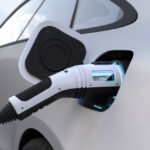Do Electric Cars Have Catalytic Converters?


Do Electric Cars Have Catalytic Converters? You might be wondering if electric vehicles are equipped with catalytic converters, a crucial component in traditional gasoline-powered cars. As the world shifts towards more environmentally friendly transportation options, understanding the technology behind electric cars is essential.
The main question revolves around the presence of catalytic converters in electric vehicles. This article aims to provide clarity on this topic and explore what this means for you as a consumer or enthusiast.
Key Takeaways
- Understanding the role of catalytic converters in traditional vehicles.
- Exploring the technology behind electric vehicles.
- Determining if electric vehicles require catalytic converters.
- The environmental impact of electric vehicles compared to traditional vehicles.
- What the future holds for electric vehicle technology.
Understanding Catalytic Converters in Traditional Vehicles

You may not see them, but catalytic converters are hard at work in traditional vehicles, minimizing harmful emissions. To appreciate the differences between conventional and electric vehicles, it’s essential to understand the role of catalytic converters in traditional cars.
What Is a Catalytic Converter?
A catalytic converter is an emissions control device that converts toxic pollutants in exhaust gas into less harmful substances. It uses catalysts, typically made from precious metals like platinum and palladium, to trigger chemical reactions that reduce emissions.
How Catalytic Converters Reduce Emissions

Catalytic converters reduce emissions by converting pollutants like carbon monoxide, nitrogen oxides, and unburned hydrocarbons into carbon dioxide, water vapor, and nitrogen. This process occurs in two stages: the reduction stage, where nitrogen oxides are converted into nitrogen, and the oxidation stage, where carbon monoxide and unburned hydrocarbons are converted into carbon dioxide and water vapor.
| Pollutant | Conversion Process | Result |
|---|---|---|
| Carbon Monoxide | Oxidation | Carbon Dioxide |
| Nitrogen Oxides | Reduction | Nitrogen |
| Unburned Hydrocarbons | Oxidation | Carbon Dioxide and Water Vapor |
Why Conventional Cars Need Them
Conventional cars need catalytic converters to comply with emissions regulations. Without these devices, vehicles would emit significantly higher levels of pollutants, contributing to air pollution and negative environmental impacts. The use of catalytic converters has become a standard practice in the automotive industry, reflecting the importance of reducing emissions from traditional vehicles.
“The catalytic converter is a critical component in reducing vehicle emissions, and its importance cannot be overstated.”
Environmental Protection Agency
Understanding the function and importance of catalytic converters in traditional vehicles sets the stage for exploring how electric vehicles differ in their approach to emissions control.
Do Electric Cars Have Catalytic Converters?
As you explore the world of electric vehicles (EVs), you might wonder if they have catalytic converters like traditional gasoline-powered cars. The answer lies in understanding the fundamental differences between electric vehicles and their gasoline-powered counterparts.
The Simple Answer
To directly address your question: No, electric cars do not have catalytic converters. This is because EVs are powered by electric motors rather than internal combustion engines, which are the primary source of emissions in traditional vehicles.
Why EVs Don’t Need Catalytic Converters
Catalytic converters are used in conventional vehicles to reduce harmful emissions produced by the combustion of gasoline. Since electric vehicles do not burn fuel and produce zero tailpipe emissions, they do not require catalytic converters. Instead, EVs rely on advanced ev pollution control devices that are integrated into their electric propulsion systems.
Electric Vehicle Propulsion Systems
Electric vehicles operate using electric motors powered by rechargeable battery packs. This propulsion system is fundamentally different from the internal combustion engine used in traditional vehicles. As a result, EVs eliminate the need for emission control devices like catalytic converters, making them a cleaner option for transportation. When you choose an electric vehicle, you’re opting for a vehicle that uses electricity as its “fuel,” thereby reducing the reliance on fossil fuels and minimizing environmental impact.
In summary, electric cars do not have catalytic converters due to their distinct propulsion systems and zero tailpipe emissions. This characteristic is a significant advantage of EVs, contributing to cleaner air quality and a more sustainable transportation solution.
Emissions Control in Electric Vehicles

You might be surprised to learn that electric vehicles have a distinct approach to emissions control. Unlike traditional internal combustion engine vehicles, electric vehicles (EVs) operate on electric power stored in batteries, significantly altering their emissions profile.
Zero Tailpipe Emissions Explained
One of the most significant advantages of EVs is their zero tailpipe emissions. Since EVs are powered by electricity, they do not burn fuel and therefore do not emit pollutants or greenhouse gases directly through their tailpipe. This characteristic makes EVs an attractive option for reducing urban air pollution.
Battery Electric Vehicles vs. Internal Combustion
Battery Electric Vehicles (BEVs) and Internal Combustion Engine (ICE) vehicles have fundamentally different propulsion systems. BEVs use electric motors powered by batteries, while ICE vehicles rely on combustion engines. This difference is crucial in understanding how EVs achieve their emissions reductions.
EV Pollution Control Devices and Mechanisms
While EVs do not have tailpipe emissions, they still require systems to manage and control other forms of emissions or environmental impact. Two key mechanisms are:
- Battery Management Systems
- Thermal Management Systems
Battery Management Systems
Battery Management Systems (BMS) play a critical role in maintaining the health and efficiency of EV batteries. By monitoring and controlling factors such as state of charge, voltage, and temperature, BMS helps to optimize battery performance and longevity.
Thermal Management
Thermal Management Systems are essential for regulating the temperature of EV batteries and other components. Proper thermal management ensures that the vehicle operates within an optimal temperature range, enhancing efficiency and reducing potential emissions associated with battery degradation.
In conclusion, electric vehicles achieve emissions control through their inherent design advantages, such as zero tailpipe emissions, and through sophisticated systems like Battery Management and Thermal Management. As the automotive industry continues to evolve, understanding these mechanisms will be crucial for appreciating the full environmental benefits of EVs.
Hybrid Vehicles and Their Exhaust Systems
You might be wondering how hybrid vehicles, which combine internal combustion engines with electric motors, manage their emissions. Hybrid cars are becoming increasingly popular due to their fuel efficiency and reduced environmental impact. However, their exhaust systems are often a subject of curiosity among car enthusiasts and environmentally conscious consumers.
How Hybrid Cars Differ from Pure EVs
Unlike pure electric vehicles (EVs), which run solely on electric power and have zero tailpipe emissions, hybrid vehicles use a combination of an internal combustion engine and one or more electric motors. This combination allows hybrids to achieve better fuel economy and lower emissions than traditional gasoline-powered vehicles. Hybrids can be categorized into different types, including full hybrids, mild hybrids, and plug-in hybrids, each with its unique characteristics and emissions control measures.

Catalytic Converters in Hybrid Vehicles
Since hybrid vehicles have an internal combustion engine, they also utilize catalytic converters to reduce harmful emissions. The catalytic converter plays a crucial role in minimizing the environmental impact of hybrids by converting pollutants such as carbon monoxide, hydrocarbons, and nitrogen oxides into less harmful substances. Although hybrids emit fewer pollutants than conventional vehicles, the presence of a catalytic converter is essential for meeting emissions standards.
Emissions Standards for Hybrids in the United States
In the United States, hybrid vehicles must comply with stringent emissions regulations set by the Environmental Protection Agency (EPA). These standards dictate the maximum allowable emissions for vehicles, including hybrids. To comply, manufacturers implement various emissions control technologies, including advanced catalytic converters and sophisticated engine management systems.
| Emissions Component | Conventional Vehicles | Hybrid Vehicles |
|---|---|---|
| Carbon Monoxide (CO) | Higher Emissions | Lower Emissions |
| Nitrogen Oxides (NOx) | Higher Emissions | Lower Emissions |
| Hydrocarbons (HC) | Higher Emissions | Lower Emissions |
By understanding how hybrid vehicles manage their exhaust systems, you can make more informed decisions about your next vehicle purchase, balancing your needs with environmental considerations.
Common Misconceptions About Electric Vehicle Emissions
You might have heard that electric vehicles aren’t as environmentally friendly as they seem, but what’s fact and what’s fiction? As electric vehicles (EVs) become more popular, it’s crucial to address the misconceptions surrounding their emissions.
The “Long Tailpipe” Argument
Critics often argue that EVs have a “long tailpipe” because they consider the emissions produced during electricity generation for charging. However, this argument overlooks the fact that EVs produce zero tailpipe emissions, reducing air pollution in urban areas.
Studies have shown that EVs are generally cleaner than internal combustion engine vehicles, even when factoring in the emissions from power plants. As the grid becomes increasingly renewable, the overall emissions associated with EVs will continue to decrease.
Catalysts and Electric Vehicles: Setting the Record Straight
Unlike traditional vehicles, EVs do not require catalytic converters because they don’t produce exhaust gases. Instead, EVs rely on advanced ev pollution control devices and eco-friendly car emissions components to minimize their environmental footprint.
Comparing Overall Environmental Impact
To understand the true environmental impact of EVs, we need to consider several factors:
- Manufacturing Emissions
- Operational Emissions
- End-of-Life Considerations
Manufacturing Emissions
EVs generally have a higher carbon footprint during manufacturing due to battery production. However, this is often offset by lower operational emissions over the vehicle’s lifetime.
As mentioned, EVs produce zero tailpipe emissions, significantly reducing air pollution. Even when considering the source of the electricity used to charge them, EVs tend to have lower overall emissions than traditional vehicles.
End-of-Life Considerations
The recycling of EV batteries is becoming more efficient, reducing waste and the demand for primary materials. Manufacturers are also designing batteries with recyclability in mind, further minimizing their environmental impact.
In conclusion, while there are valid concerns about EV emissions, the evidence suggests that they offer a cleaner alternative to traditional vehicles. As technology advances and the grid becomes greener, the environmental benefits of EVs will only continue to grow.
Conclusion
You now understand that electric cars do not have catalytic converters, a key difference between electric vehicles and traditional internal combustion engine cars. Electric vehicle emissions control is achieved through different mechanisms, primarily the use of electric propulsion systems that produce zero tailpipe emissions.
The distinction between electric, hybrid, and conventional vehicles is crucial in understanding their environmental impact. Hybrid vehicles, while not purely electric, still rely on catalytic converters to reduce emissions, whereas electric vehicles rely on their electric propulsion systems.
Accurate information about electric vehicle technology is essential in assessing their environmental benefits. As the automotive industry continues to evolve, understanding the differences in emissions control between various vehicle types will be vital in making informed decisions about sustainable transportation options.
FAQ
Do electric cars have catalytic converters?
No, electric cars do not have catalytic converters because they are powered by electric motors and do not have an internal combustion engine, which is where catalytic converters are typically used to reduce emissions.
How do electric vehicles control emissions?
Electric vehicles control emissions through their electric propulsion systems, battery management systems, and thermal management, resulting in zero tailpipe emissions and reduced overall environmental impact.
What is the role of battery management systems in electric vehicles?
Battery management systems in electric vehicles play a crucial role in controlling emissions by regulating the charging and discharging of the battery, optimizing performance, and preventing overheating, which can impact the overall efficiency and environmental benefits of the vehicle.
Do hybrid vehicles have catalytic converters?
Yes, hybrid vehicles have catalytic converters because they are equipped with internal combustion engines, which require emissions control measures to meet regulatory standards.
How do hybrid vehicles differ from pure electric vehicles in terms of emissions control?
Hybrid vehicles differ from pure electric vehicles in that they have both an internal combustion engine and an electric motor, requiring a combination of traditional emissions control measures, such as catalytic converters, and electric vehicle-specific technologies to minimize their environmental impact.
What are the emissions standards for hybrid vehicles in the United States?
Hybrid vehicles in the United States must meet emissions standards set by the Environmental Protection Agency (EPA), which regulate the amount of pollutants that can be emitted by vehicles, including hybrids, to minimize their environmental impact.
Are electric vehicles completely emission-free?
While electric vehicles have zero tailpipe emissions, their overall environmental impact depends on the source of the electricity used to charge them, as well as manufacturing and end-of-life considerations, which can affect their overall emissions profile.
How do electric vehicle emissions compare to those of traditional internal combustion engine vehicles?
Electric vehicles generally have a lower overall emissions profile compared to traditional internal combustion engine vehicles, especially when factoring in operational emissions, although the production phase can have a higher environmental impact.




































































































































































































